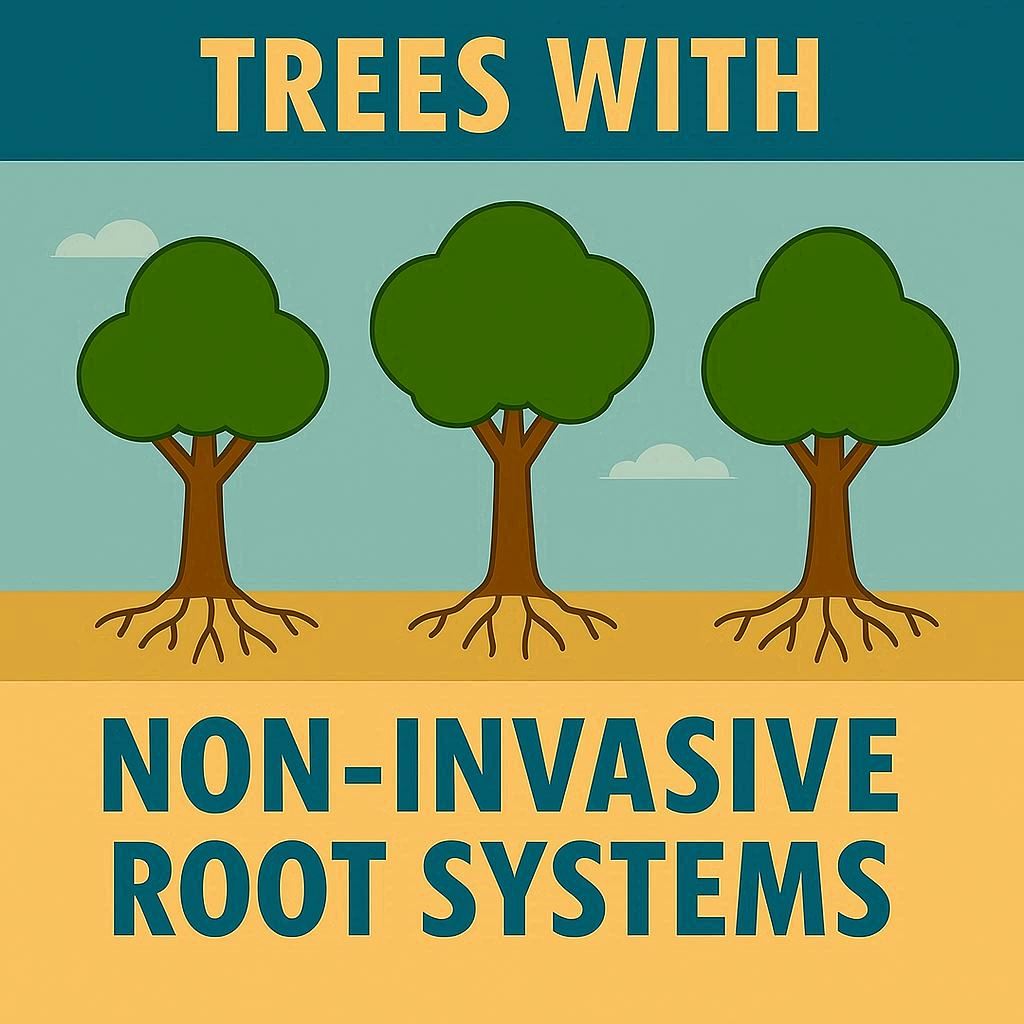
When designing a landscape or adding trees near buildings, driveways, or pipes, choosing species with non-invasive roots is essential. Some trees grow fast but have destructive root systems that crack foundations, lift sidewalks, and invade water lines. Fortunately, many beautiful trees offer shade, color, and structure without the risk of damage.
This guide explores small, medium, and large trees with non-invasive roots, including new additions by climate region and function — from ornamental flowering trees to shade and fruit-bearing varieties.
🌿 Small Trees (15–25 feet tall)
Small trees are perfect for yards, patios, or near buildings. Their compact root systems and moderate canopies provide beauty and shade without threatening infrastructure.
1. Japanese Maple (Acer palmatum)
Japanese maples stand out for their ornamental value combined with minimal root intrusion. These trees produce stunning foliage in shades of red, orange, and yellow throughout the seasons.
- Height: 15–25 ft
- Zones: 5–8
- Best Features: Compact roots, low canopy spread, rich fall colors.
Their shallow, fibrous roots make them ideal for small gardens and foundation-safe planting.
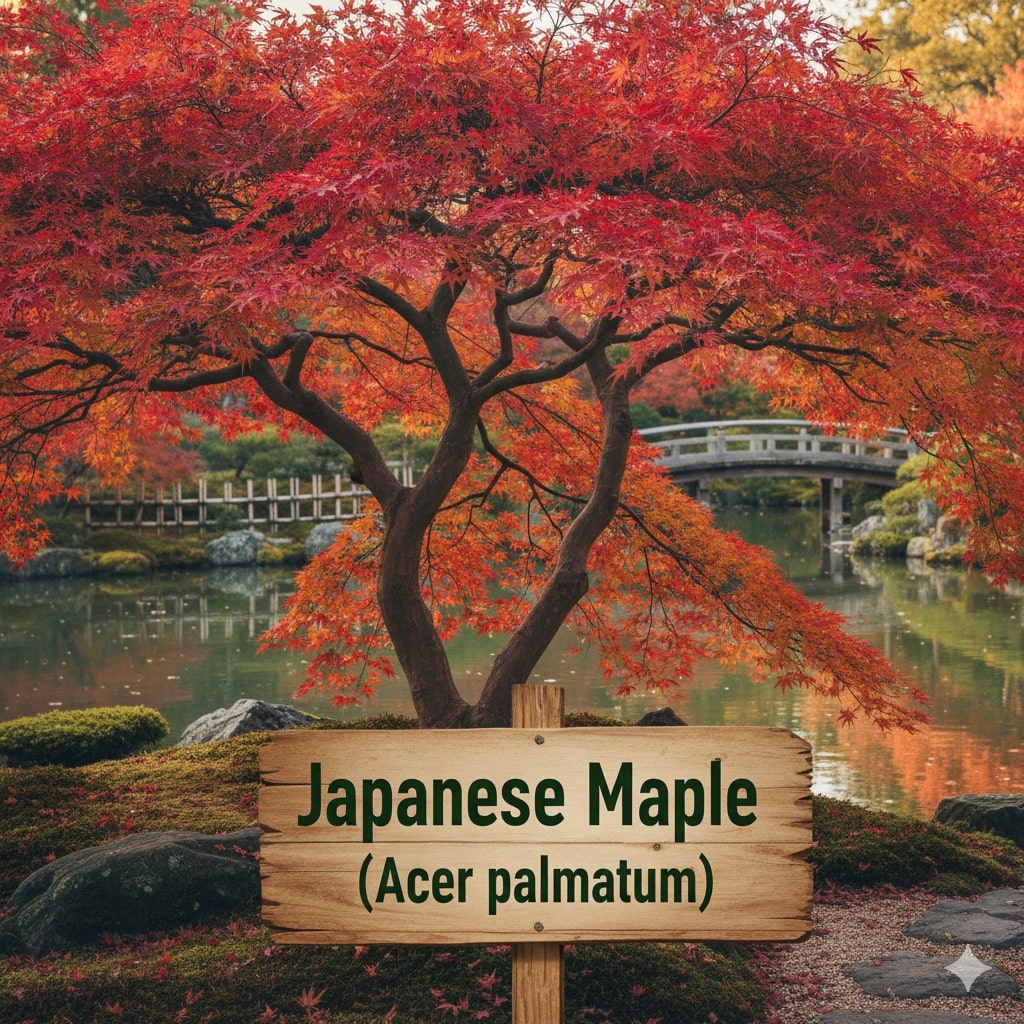
2. Amur Maple (Acer ginnala)
This compact maple grows 15–20 feet tall and thrives in zones 3–8, making it adaptable across most of North America.
- Height: 15–20 ft
- Zones: 3–8
- Best Features: Brilliant red fall foliage, hardy in cold regions.
The Amur maple’s roots remain shallow and non-aggressive, making it perfect for small spaces.

3. Serviceberry (Amelanchier spp.)
Also called Juneberries or Saskatoon berries, serviceberries range from 15–25 feet tall and are native throughout North America.
- Zones: 4–9
- Highlights: White spring flowers, edible berries, and colorful fall leaves.
Their fibrous, non-invasive root system adapts to most soils and landscape settings.
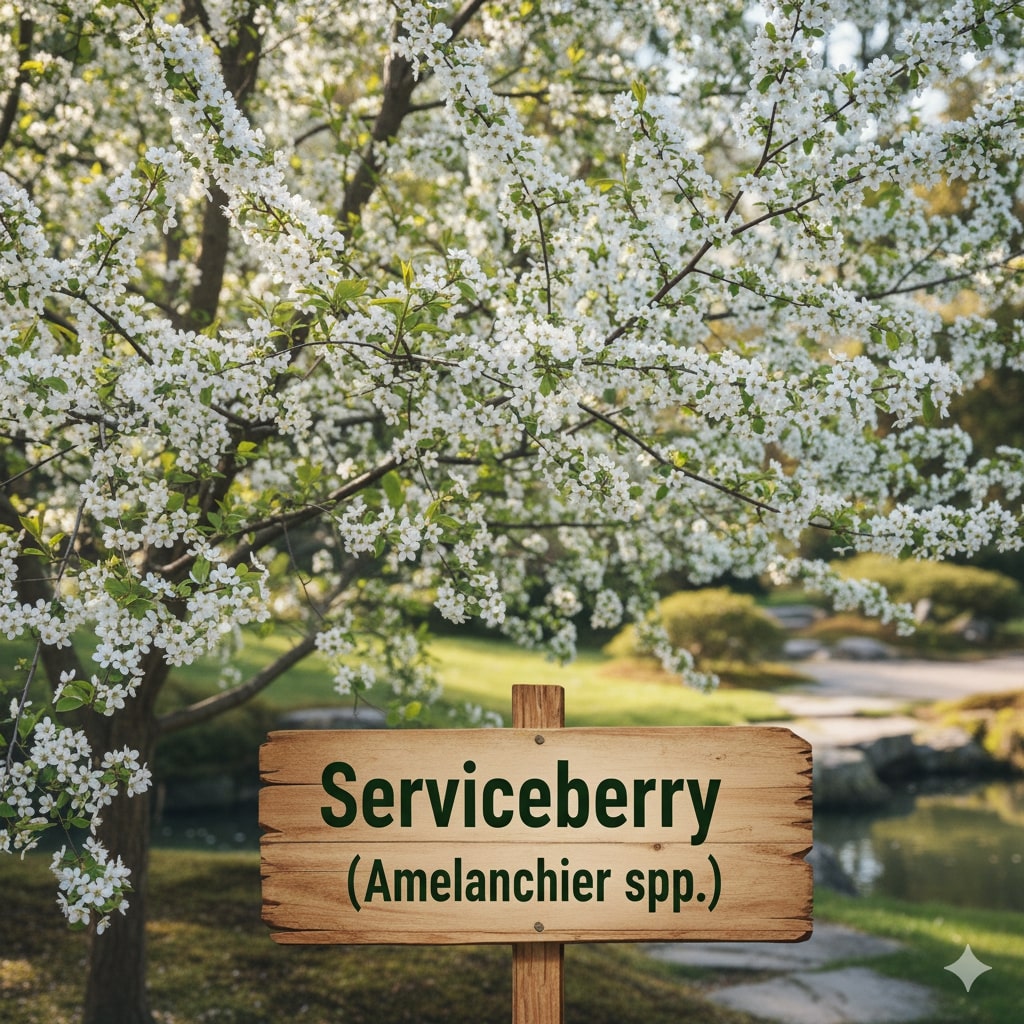
4. Crabapple Trees (Malus spp.)
Adams Crabapple and other cultivars reach 15–25 feet and produce beautiful spring flowers followed by fruit that attracts birds.
- Zones: 4–8
- Highlights: Ornamental flowers, wildlife support, compact roots.
Proper spacing prevents crowding, but roots rarely damage foundations.

5. Kousa Dogwood (Cornus kousa)
Reaching 15–30 feet, Kousa dogwood produces vibrant white blossoms in late spring and red berries in fall.
- Zones: 5–8
- Highlights: Non-aggressive roots, white bracts, bird-friendly fruit.
Perfect for foundation plantings and shaded garden borders.
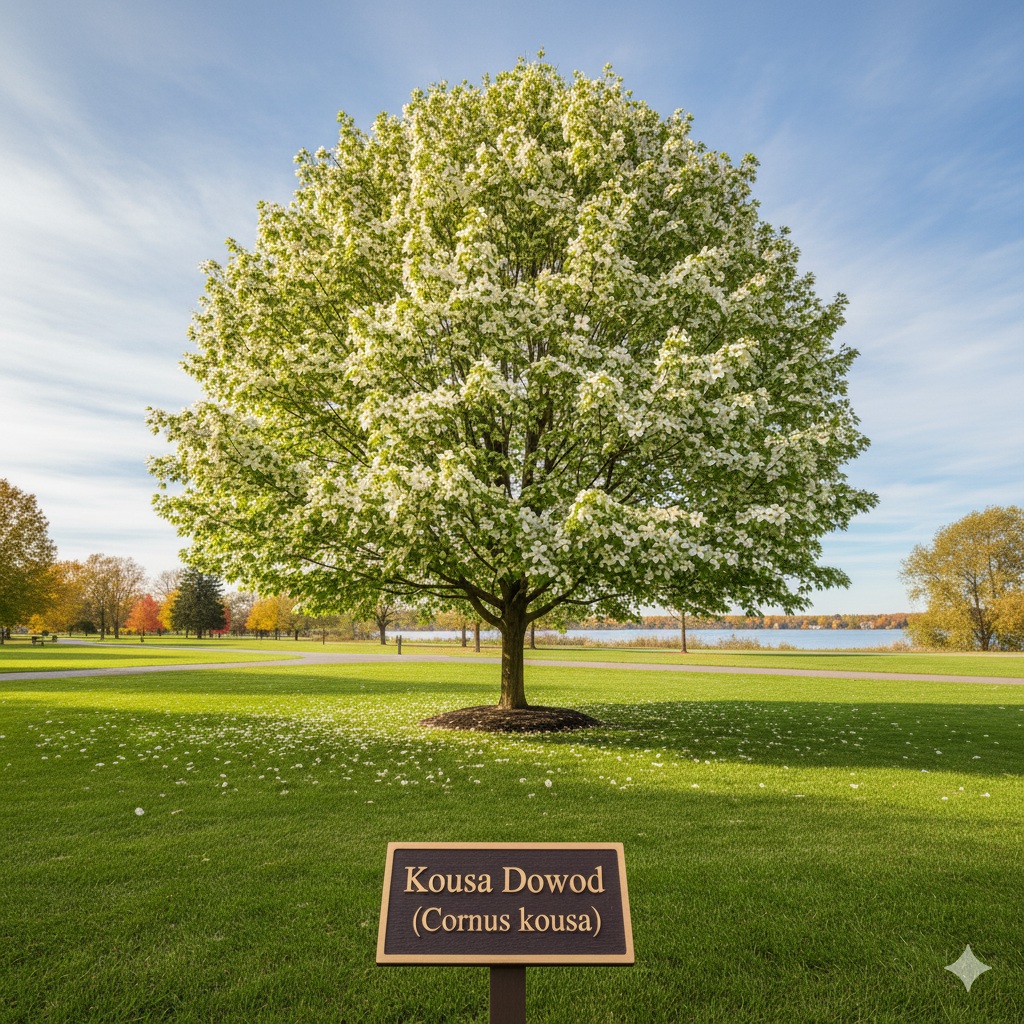
6. American Hornbeam (Carpinus caroliniana)
Also called musclewood, this tree reaches 20–30 feet and features a shallow root system perfect for limited spaces.
- Zones: 3–9
- Highlights: Silvery-gray bark, tolerance for shade.
7. Eastern Redbud (Cercis canadensis)
With heart-shaped leaves and vibrant pink spring flowers, Eastern redbud grows 15–30 feet tall.
- Zones: 4–8
- Highlights: Spring color, wildlife-friendly, minimal root spread.
A favorite ornamental tree for courtyards and gardens.
8. Dwarf Plum (Prunus domestica var. dwarf)
Growing to 8–10 feet tall, dwarf plums yield delicious fruit while maintaining manageable roots.
- Zones: 5–9
- Highlights: Fruit-bearing, compact size, shallow but non-invasive roots.

9. Dwarf Cherry (Prunus avium var. dwarf)
Perfect for smaller yards, dwarf cherry trees produce stunning blossoms and small fruit without aggressive roots.
- Zones: 5–9
- Highlights: Compact and productive, perfect near patios or fences.
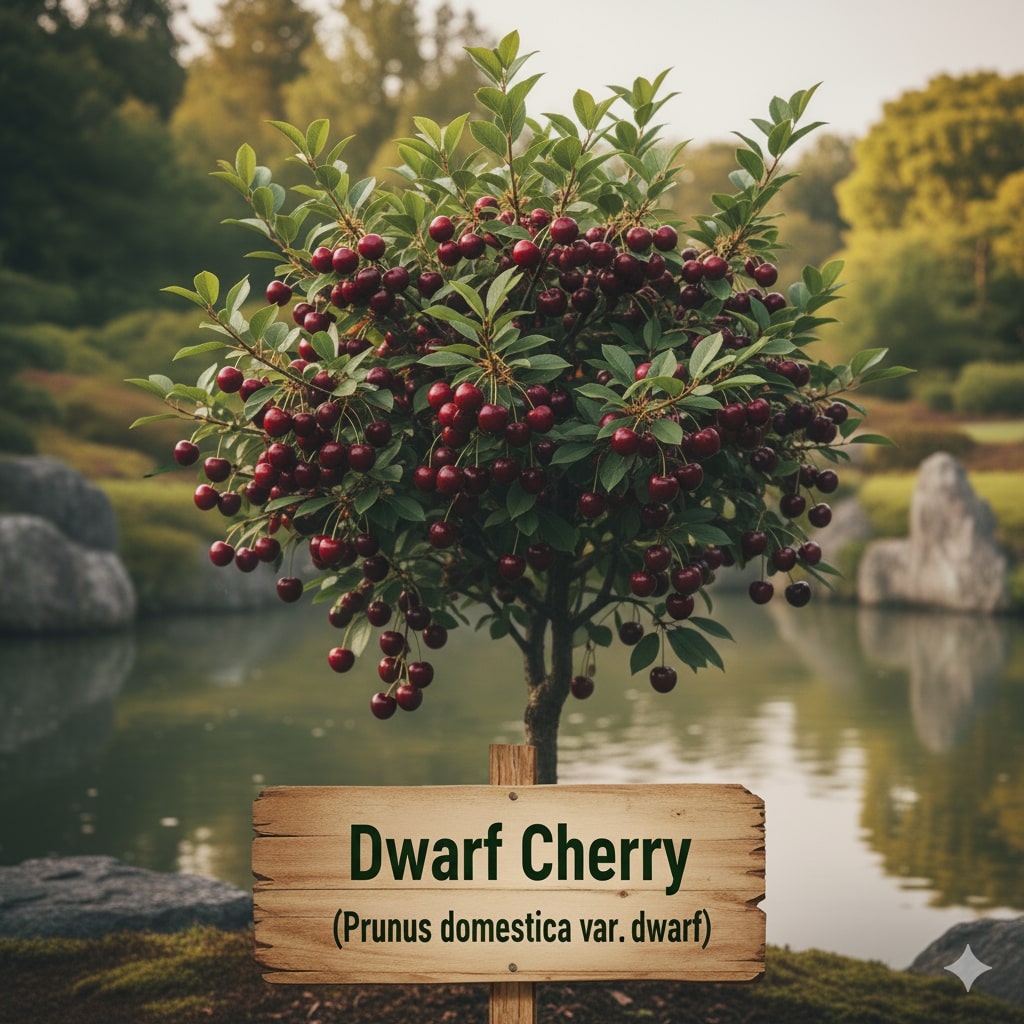
10. Japanese Stewartia (Stewartia pseudocamellia)
A stunning small ornamental with camellia-like flowers and multi-season bark interest.
- Height: 20–30 ft
- Zones: 5–8
- Highlights: Non-invasive roots, mottled bark, white summer blooms.
Excellent for compact gardens and near walkways.
11. Fringe Tree (Chionanthus virginicus)
Also known as “Old Man’s Beard,” this native U.S. species produces fluffy white flowers in spring.
- Height: 12–20 ft
- Zones: 4–9
- Highlights: Deep-rooted, foundation-safe, tolerant of pollution.
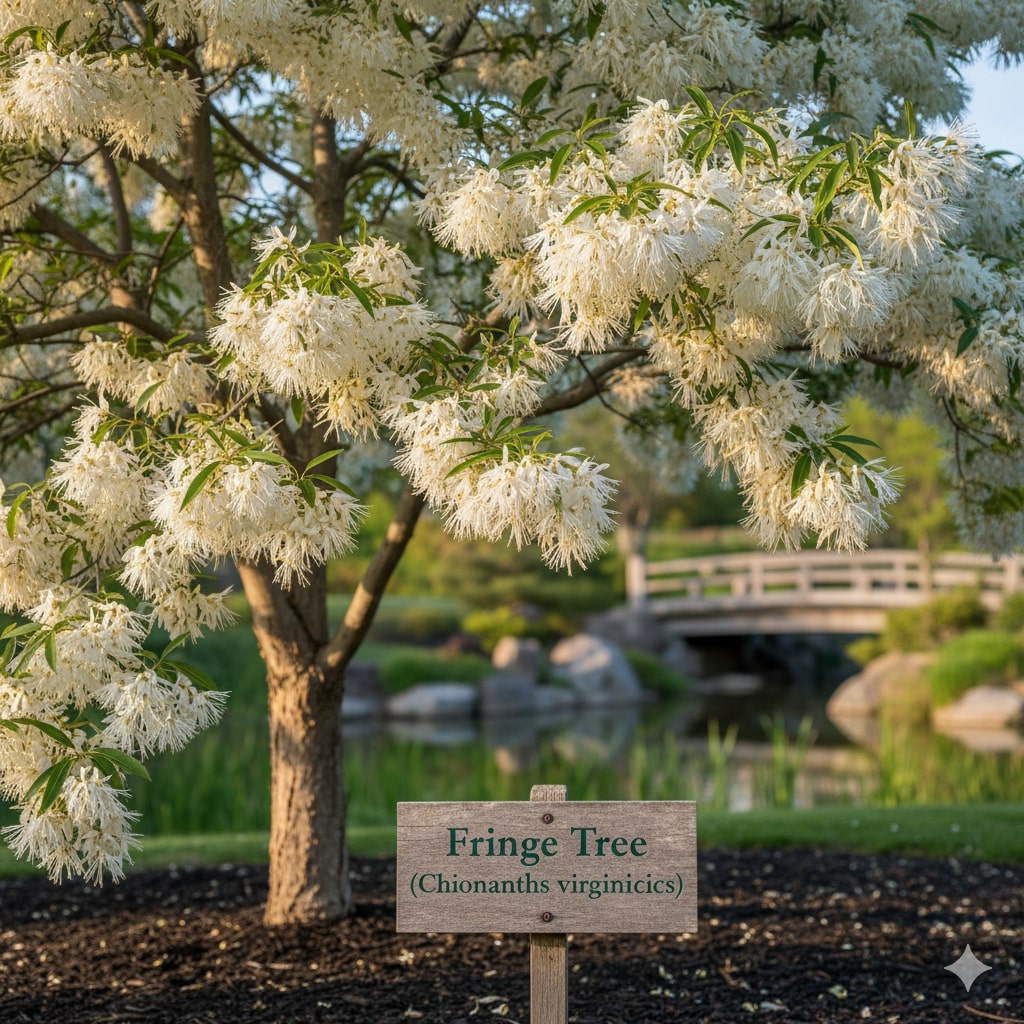
12. Japanese Tree Lilac (Syringa reticulata)
A low-maintenance small tree with creamy summer blooms.
- Height: 20–25 ft
- Zones: 3–7
- Highlights: Deep roots, minimal spread, ideal for driveways and small yards.
🌳 Medium Trees (30–50 feet tall)
Medium-sized trees provide significant shade and ornamental value while maintaining deep or compact root structures suitable for urban and suburban landscapes.
13. Crape Myrtle (Lagerstroemia indica)
Crape myrtles reach 15–30 feet and produce vibrant summer blooms in pink, white, and purple.
- Zones: 6–9
- Highlights: Colorful flowers, drought-tolerant, non-aggressive roots.
They thrive in full sun and compact soils, making them perfect for southern climates.
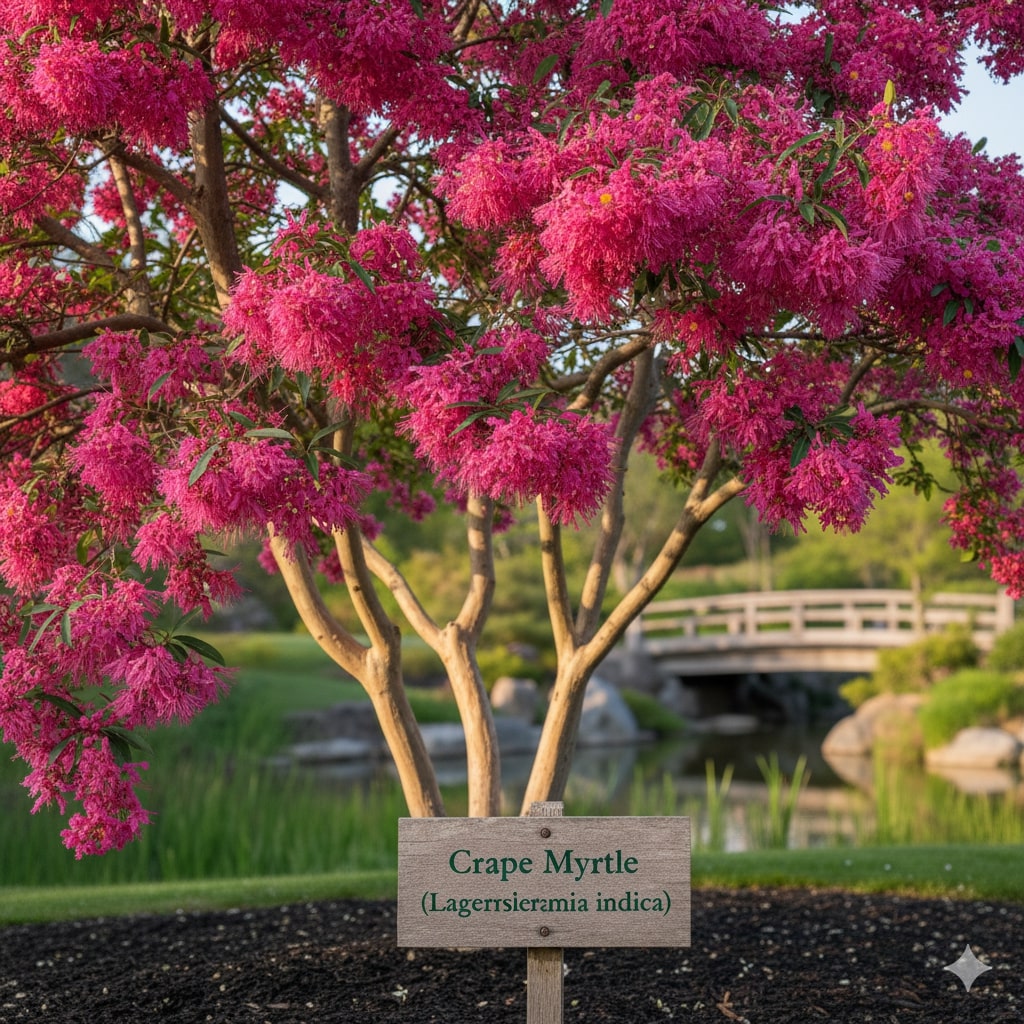
14. Chinese Pistache (Pistacia chinensis)
A hardy deciduous shade tree with brilliant orange and red fall foliage.
- Zones: 6–9
- Highlights: Deep-rooted, pollution-tolerant, perfect for urban spaces.

15. Star Magnolia (Magnolia stellata)
Known for its early spring bloom, this tree adds elegance without disrupting soil structures.
- Zones: 4–8
- Highlights: Compact roots, pink-white blooms, excellent near patios.
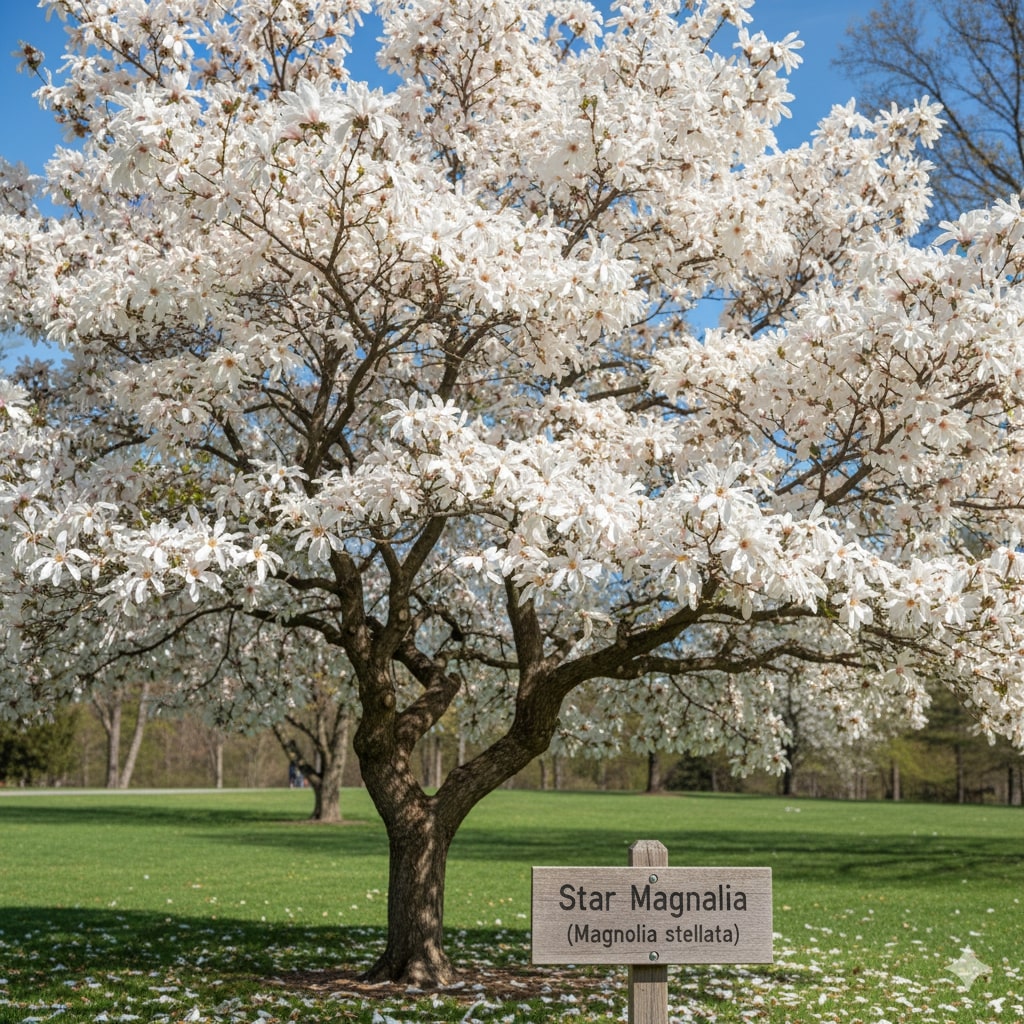
16. River Birch (Betula nigra)
A medium-sized birch with peeling bark and tolerance for wet conditions.
- Height: 40–50 ft
- Zones: 4–9
- Highlights: Non-destructive surface roots, great for damp soil.

17. Sweetbay Magnolia (Magnolia virginiana)
An adaptable magnolia with fragrant flowers and soft evergreen foliage.
- Height: 30–50 ft
- Zones: 5–10
- Highlights: Fibrous, non-invasive roots; thrives in moist conditions.
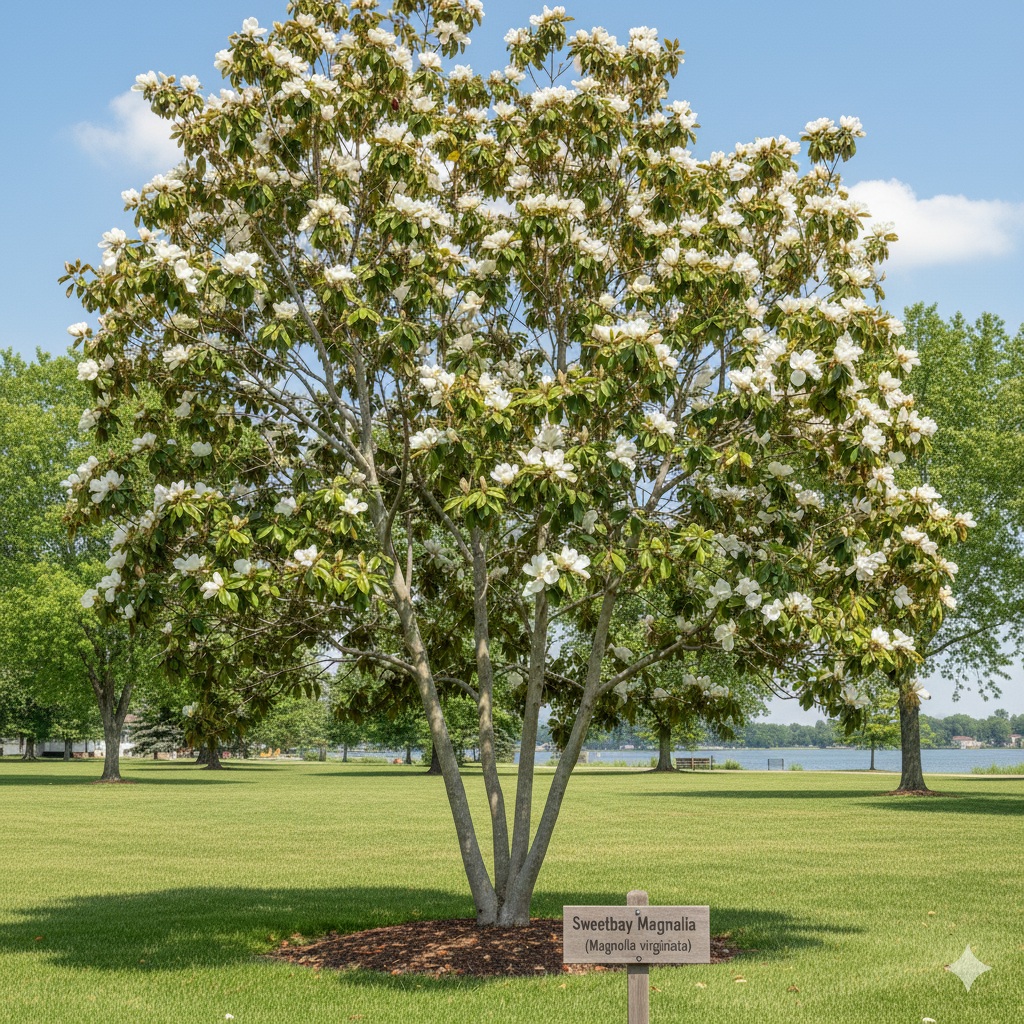
18. Trident Maple (Acer buergerianum)
A compact maple species with vibrant fall foliage and manageable roots.
- Height: 25–35 ft
- Zones: 5–9
- Highlights: Non-invasive, drought-resistant, ideal for driveways.
19. Persian Ironwood (Parrotia persica)
A slow-growing, ornamental shade tree with beautiful exfoliating bark.
- Height: 25–40 ft
- Zones: 5–8
- Highlights: Deep root system, minimal lateral spread, attractive winter bark.
20. European Hornbeam (Carpinus betulus)
A stately, dense-canopy tree that grows in compact soil with controlled root systems.
- Height: 35–45 ft
- Zones: 4–8
- Highlights: Strong trunk, deep roots, ideal for hedging or shade.
🌲 Large Trees (50+ feet tall)
For open landscapes and large yards, these trees deliver expansive shade without destructive roots. Deep-rooted species anchor well and don’t spread aggressively near the surface.
21. Citrus Trees (Citrus spp.)
Citrus trees, including oranges and lemons, produce delicious fruit with relatively non-invasive roots.
- Zones: 8–11
- Highlights: Fruit-bearing, adaptable, root-safe.

22. Northern Red Oak (Quercus rubra)
A deep-rooted oak with a strong vertical root system.
- Zones: 3–8
- Highlights: Fast-growing, shade-giving, foundation-safe when spaced properly.
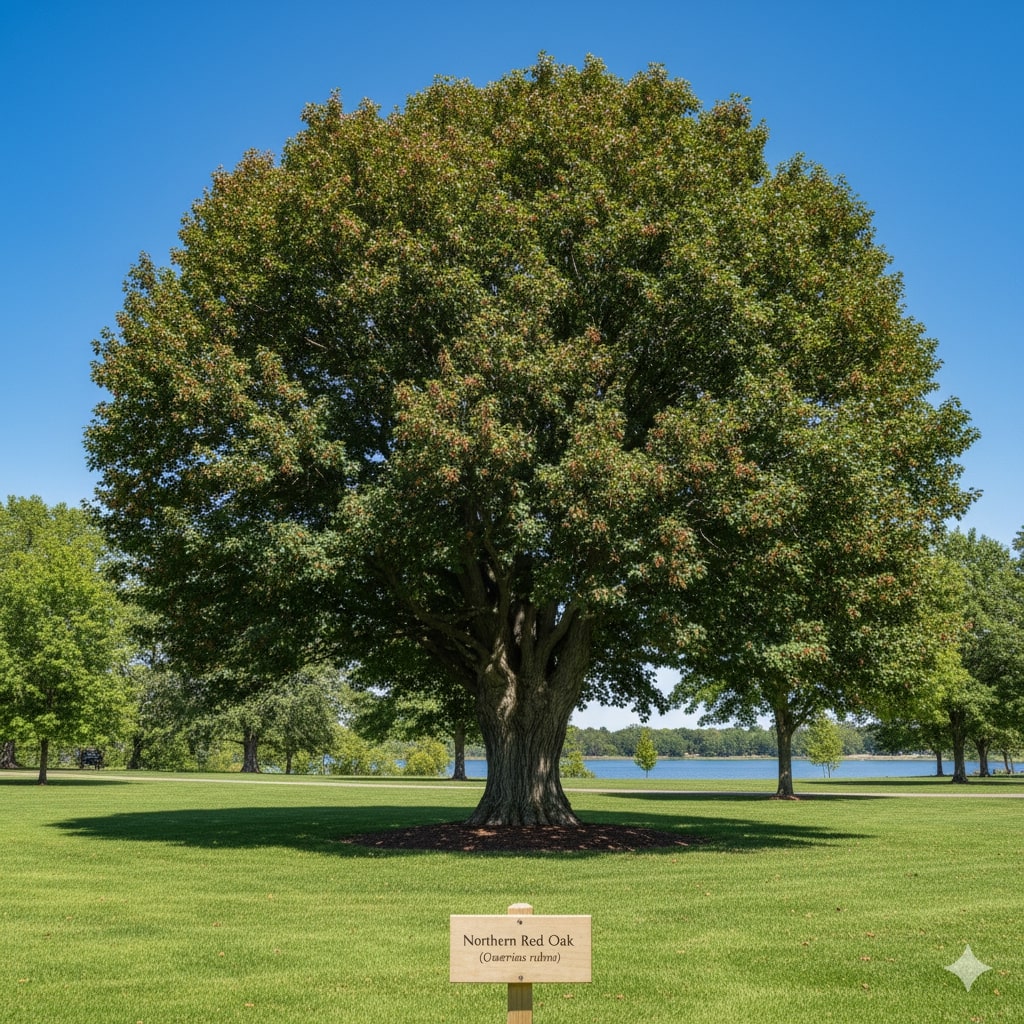
23. Tulip Tree (Liriodendron tulipifera)
A tall, elegant shade tree with tulip-shaped blooms.
- Height: 80–130 ft
- Zones: 4–9
- Highlights: Fast-growing, stable taproot, minimal lateral spread.

24. Ginkgo (Ginkgo biloba)
A pollution-resistant, ancient species with fan-shaped leaves.
- Height: 50–80 ft
- Zones: 4–9
- Highlights: Deep taproot, no surface heaving, ideal for urban streetscapes.
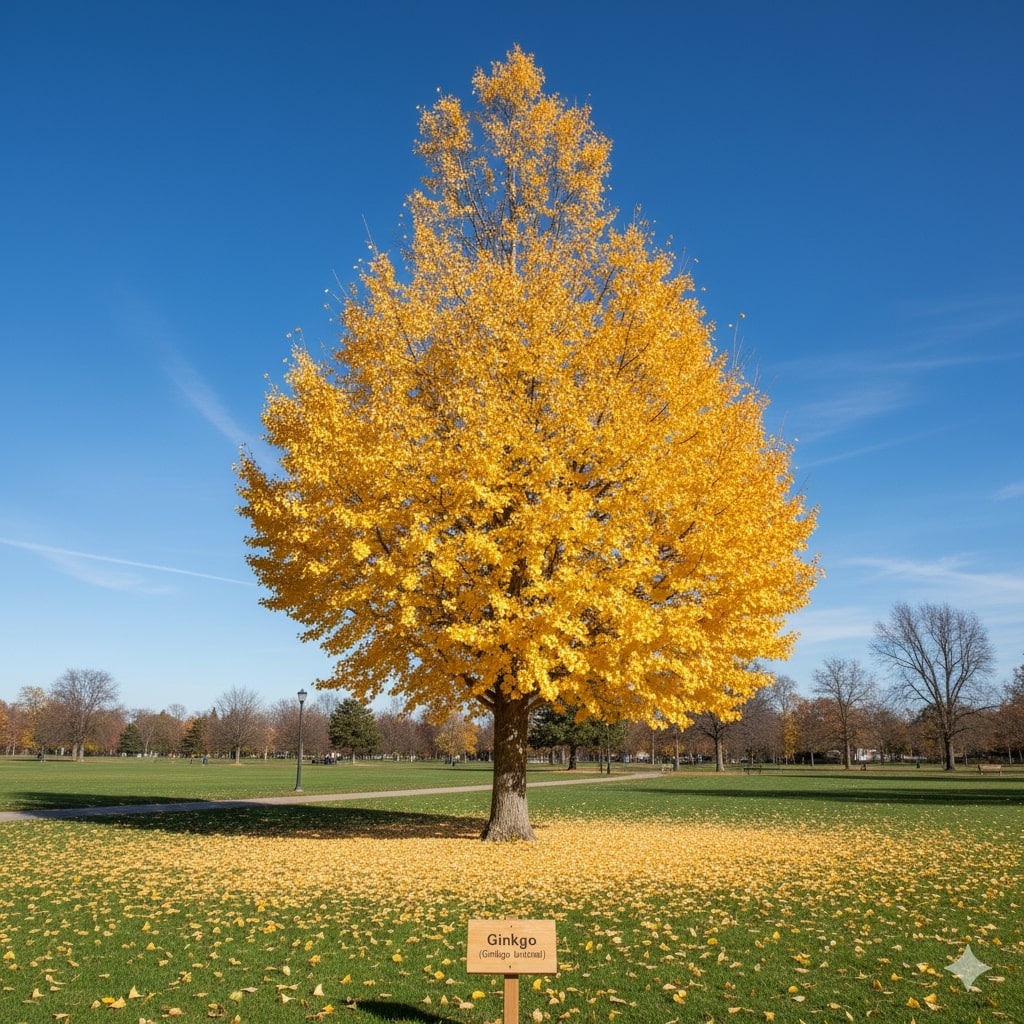
25. American Elm ‘Princeton’ (Ulmus americana)
Modern cultivars like ‘Princeton’ and ‘Valley Forge’ resist Dutch elm disease.
- Height: 60–80 ft
- Zones: 4–9
- Highlights: Vase-shaped canopy, stable roots, durable shade tree.
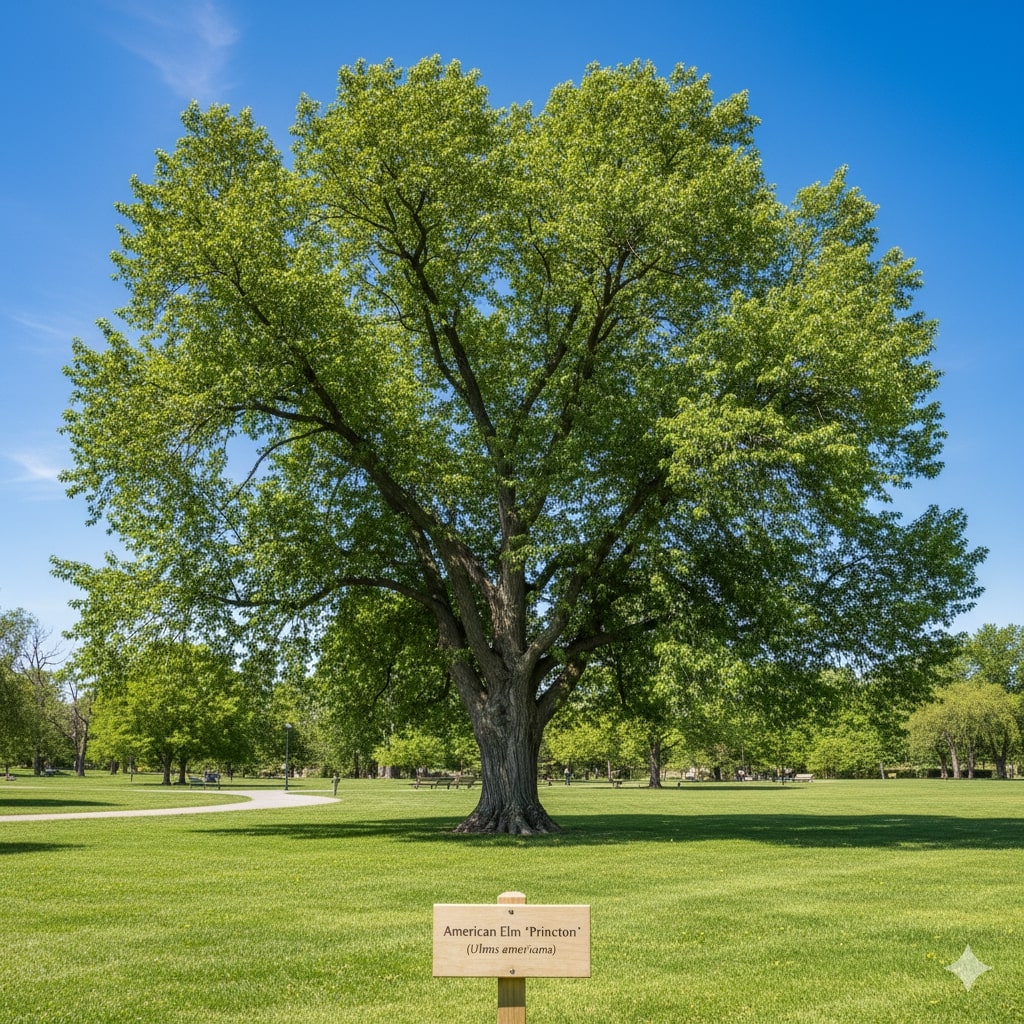
26. Bald Cypress (Taxodium distichum)
A large conifer native to southern wetlands, known for its deep, non-invasive roots.
- Height: 60–100 ft
- Zones: 4–10
- Highlights: Root knees only form in flooded soils; otherwise safe for dry yards.
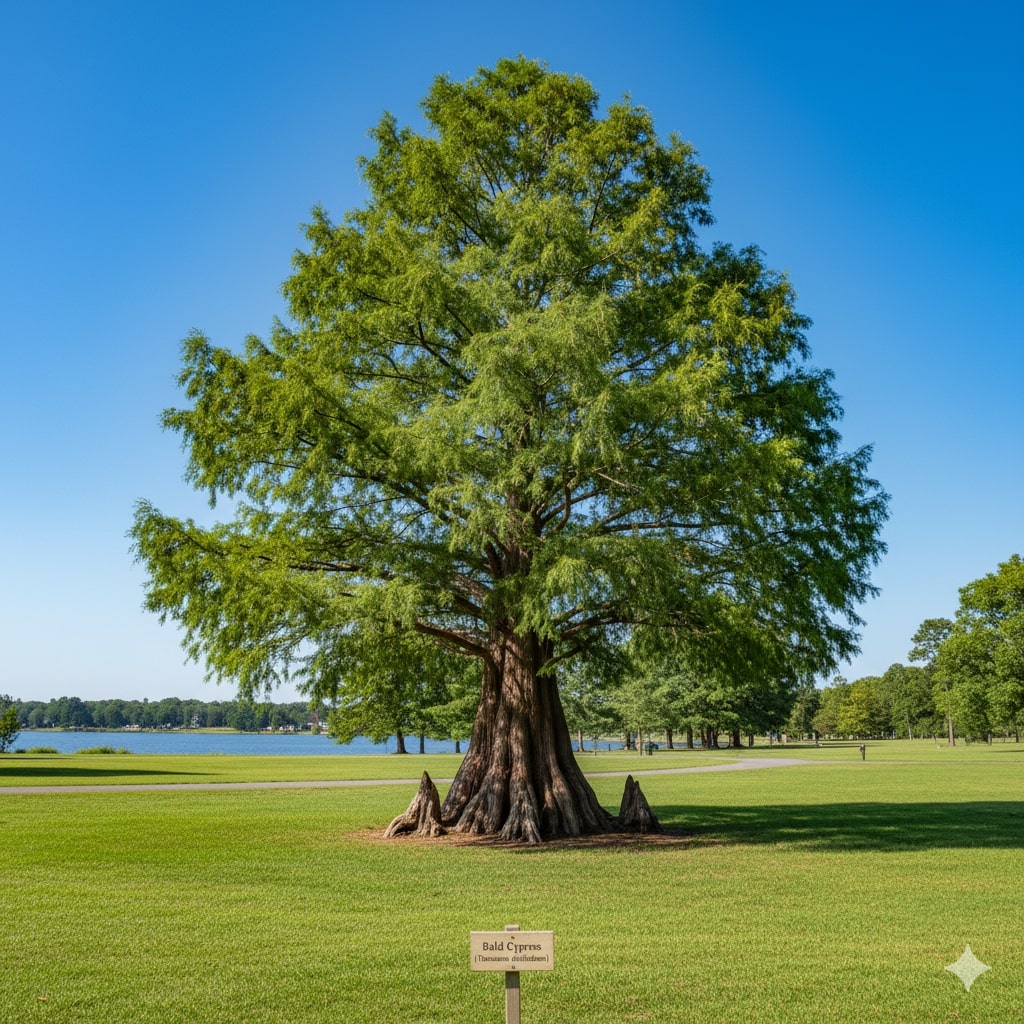
27. Southern Magnolia (Magnolia grandiflora)
An evergreen giant with glossy leaves and large, fragrant flowers.
- Height: 60–80 ft
- Zones: 7–10
- Highlights: Deep taproot, long lifespan, beautiful specimen tree.
🌳 Trees to Absolutely Avoid
These species have aggressive, destructive root systems that seek moisture and can damage structures, pipes, and pavements:
| Aggressive Tree | Problem |
|---|---|
| Willow (Salix spp.) | Invades plumbing and foundations |
| Poplar (Populus spp.) | Brittle branches, invasive roots |
| Silver Maple (Acer saccharinum) | Extremely shallow, cracks concrete |
| Eucalyptus | Competes for water, damages foundations |
| Mulberry | Strong lateral roots, invasive |
| Ficus / Banyan | Rapid-growing, root-destructive |
| Camphor Tree (Cinnamomum camphora) | Spreading root mats |
| Ash, Sycamore, Gum Trees | Aggressive surface roots |
| Regular Elms (non-resistant) | Root and disease issues |
🌾 Planting Guidelines for Safety
Even with non-invasive species, proper placement ensures long-term stability and safety:
- Distance: Plant small trees 5–10 ft, medium trees 10–20 ft, and large trees 20–30 ft from buildings or pipes.
- Root barriers: Use physical barriers to direct roots downward.
- Watering: Deep, infrequent watering promotes vertical root growth.
- Maintenance: Prune regularly to balance canopy and root development.
- Soil Care: Ensure proper drainage—overly compact soil can push roots upward.
🌼 Creating Your Safe Landscape
By selecting trees with non-invasive roots, you can design a lush, long-lasting landscape without worrying about property damage.
Whether it’s a Japanese Maple shading your patio or a Ginkgo gracing your front yard, choosing wisely ensures harmony between nature and infrastructure.
Slow-growing, deep-rooted trees often outlive fast-growing invasive species and offer higher landscape value over decades. Always consult local arborists or nurseries to match species with your soil, zone, and moisture conditions.
🌼 How to Prevent Root Problems
Even with non-invasive species, a few precautions ensure long-term safety:
- Plant at the right distance:
Keep at least 10–20 ft from driveways and foundations, depending on size. - Use root barriers:
Install physical barriers underground to direct root growth downward. - Water deeply but infrequently:
Encourages deep root growth rather than shallow spreading. - Prune wisely:
Remove surface roots early before they mature. - Choose grafted or dwarf varieties:
These have smaller, well-contained root systems.
🌳 Choosing the Right Tree Size
| Tree Size | Ideal Planting Location | Root Behavior | Example Species |
|---|---|---|---|
| Small (10–25 ft) | Patios, sidewalks, courtyards | Compact and fibrous | Japanese Maple, Redbud |
| Medium (25–50 ft) | Yards, driveways, property lines | Moderate depth | River Birch, Chinese Pistache |
| Large (50+ ft) | Open lawns, parks, windbreaks | Deep and stable | Red Oak, Tulip Poplar |
❓ FAQs on Non-Invasive Root Trees
1. What tree has the least invasive roots?
The Japanese Maple and Dogwood are among the least invasive, perfect for small spaces and near buildings.
2. Can you plant trees near your house?
Yes, but ensure they have non-invasive roots and are planted at least 10–20 feet away depending on mature size.
3. Which large shade tree has non-invasive roots?
The Ginkgo and Tulip Poplar grow tall and strong without damaging nearby infrastructure.
4. How do I tell if a tree’s roots are invasive?
Fast-growing trees with wide canopies and shallow roots (like willows or poplars) tend to be invasive. Always research the species before planting.
5. Are oak trees safe near foundations?
Most oak species like Red Oak or White Oak are deep-rooted and safe when planted 15–20 feet from structures.
6. Can I use root barriers for any tree?
Absolutely. Barriers can redirect even aggressive roots downward, helping prevent future issues.
🌲 Final Thoughts
Non-invasive root trees allow you to enjoy the beauty, shade, and value of trees without risking structural damage. From elegant Japanese Maples to towering Ginkgos, there’s a suitable option for every yard size and climate.
By understanding each tree’s growth pattern and planning your planting space wisely, you’ll ensure your landscape stays healthy, balanced, and trouble-free for decades.
Citations
https://www.groundsguys.ca/blog/trees-with-non-invasive-roots/
https://blog.davey.com/trees-with-non-invasive-root-systems/
https://stroberttree.com/blog/trees-with-non-invasive-roots
